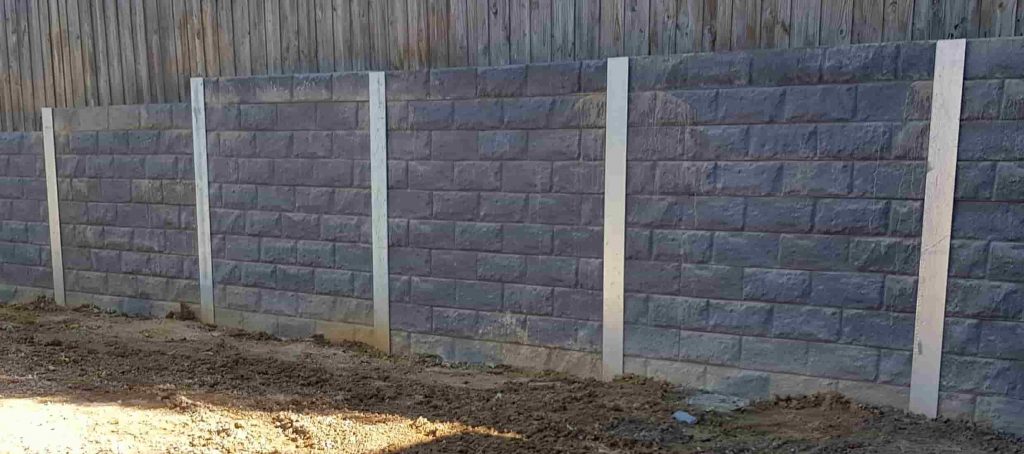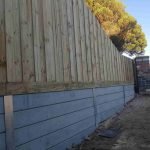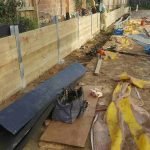Introduction
Retaining walls serve an important function in landscaping and building and construction. Whether you're wanting to boost the visual appeal of your garden or prevent soil disintegration on your home, a well-constructed retaining wall can make all the distinction. Nevertheless, starting a retaining wall setup project needs cautious preparation and consideration. In this detailed guide, we'll check out different aspects you ought to bear in mind before hiring a retaining wall contractor, picking materials, and starting the installation process.
Key Considerations for Your Next Retaining Wall Installation Project
When initiating a retaining wall installation project, a number of essential factors to consider need to be resolved to ensure effective conclusion. Comprehending these elements will not just save you money and time but likewise contribute to the durability and functionality of your maintaining wall.
Understanding Your Needs
What is the Function of Your Maintaining Wall?
Before diving into product choices or hiring a retaining wall builder, it's necessary to specify the function of your retaining wall. Are you wanting to:
- Prevent soil erosion? Create flat surface areas for gardening? Enhance your landscape's aesthetics?
Identifying the primary function will direct every subsequent decision.
How High Will Your Wall Be?
The height of your retaining wall substantially influences its style and structural requirements. Usually, walls over 4 feet might need extra engineering considerations.
Choosing the Right Material
Timber Sleeper Retaining Walls
Timber sleeper walls offer a natural appearance and are often much easier to install. Nevertheless, they have limitations in terms of life-span and susceptibility to rot if not treated properly.
Pros:
- Cost-effective Easy installation
Cons:

- Limited durability Requires maintenance
Concrete Sleeper Retaining Walls
Concrete sleeper walls are robust and long-lasting, making them an outstanding option for more extensive projects where strength is paramount.


Pros:
- Durable Low maintenance
Cons:
- Higher initial costs Heavier products can complicate installation
Brick and Stone Retaining Walls
Brick and stone walls provide classic sophistication while providing strength. These options can be more labor-intensive but yield stunning results that mix with nature beautifully.
Hiring Qualified Professionals
Finding a Trustworthy Retaining Wall Contractor
Searching for a retaining wall professional near me? Here are some tips:
Check Reviews: Online platforms like Google or Yelp can supply insights into previous customer experiences. Ask for Recommendations: A credible specialist needs to readily supply recommendations from previous projects. Verify Qualifications: Ensure they have proper licenses and insurance.Why Select Local?
Opting for local specialists like a retaining wall specialist Melbourne ensures they comprehend local guidelines and climate considerations that may affect your project.
Planning Your Project
https://archerexpertqsvo810.mystrikingly.com/Permits and Regulations
Before you start any construction work, check local laws regarding authorizations required for retaining walls. Some municipalities implement stringent guidelines on height, products utilized, and placement.
Site Preparation Steps
Proper website preparation is essential for long-lasting success. This consists of:
Clearing debris Assessing drain needs Ensuring proper gradingDesign Elements
Aesthetic Considerations
Consider how your chosen products will mix with existing landscaping functions such as plants, trees, and other structures around your property.
Drainage Solutions
Incorporating sufficient drainage solutions prevents water accumulation behind the wall which could lead to structural failure over time.
Cost Factors
Budgeting Your Project
How much does it cost to set up a retaining wall? The price can vary extensively based upon elements like:
Material option Wall height Labor costsCreating a comprehensive spending plan helps minimize unanticipated expenditures throughout construction.
FAQs about Retaining Wall Installation
What is the best material for maintaining walls?- It depends upon personal choices and job requirements; concrete is durable while wood uses an organic look.
- Generally, footings ought to extend listed below the frost line; seek advice from regional building regulations for particular requirements.
- While do it yourself is possible for small tasks, employing specialists ensures safety and compliance with regulations.
- Regular evaluations for cracks or disintegration are key; clean drainage systems periodically.
- Timber lasts around 10-- twenty years while concrete can last over 50 years with appropriate care.
- Yes! Professionals bring proficiency that guarantees quality craftsmanship which saves you money in the long run.
Conclusion
When considering your next retaining wall setup project, cautious preparation is important-- from comprehending your requirements to choosing materials carefully-- as each action adds to producing an efficient service customized specifically to your landscape requirements. Working with knowledgeable experts such as a retaining wall home builder Melbourne will even more make sure that all elements-- style, functionality, legalities-- are effortlessly incorporated into one cohesive structure that improves both safety and beauty on your property.
Remember: investing time upfront settles in countless methods down the road! So gather your thoughts, ask concerns, check out choices completely, then start on bringing that vision of yours into reality!